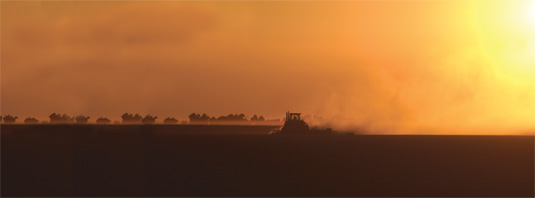
Something in the Air
Building on decades of expertise and on a collaborative approach,
UC Davis leads the way in understanding air pollution’s
impact on our health and climate.
By Sylvia Wright
Take a deep breath. Now entering your lungs, bloodstream and perhaps your brain—“air” bearing all the exhalations of modern life: tailpipe exhaust, fireplace smoke, flame-broiled animal fats, industrial chemicals and carpet fumes. If you are within 100 yards of a freeway, you also have inhaled tire shreds and partially burned diesel fuel. If downwind from a farm, then ammonia from animal wastes or soot from burning rice straw. At the coast, you’ll breathe in salt, of course, maybe trans-Pacific sand from eroding Chinese deserts and perhaps something unexpected: sulfuric acid from the smokestacks of unregulated cargo and cruise ships.
Every fifth-grader knows that we breathe carbon dioxide and oxygen. But no one knows exactly what else we breathe, how much, where it comes from or how it affects our health. Answering those questions now is particularly urgent: Some UC Davis researchers have found disturbing patterns that link air pollution with serious human health problems, including chronic asthma in children and early death in some adults, and others see novel roles for air pollution in climate change.
UC Davis has a tradition of expertise in many aspects of air pollution: shedding light on the contributions of agricultural activities, the origins of haze over national parks, the benefits of cleaner fuels and emission controls in automobiles. It’s a success strengthened by a delight in inventing new research tools when the need arises and a willingness to bridge the traditional divides between the biological and physical disciplines. Now, with 60 faculty and staff researchers focused on the issues and a record $50 million in directed funding, the campus has become a leader among the handful of institutions in the United States working intensively on problems related to air pollution.
Related stories:
A Toll on Human Health
UC Davis researchers have made major contributions to understanding how airborne environmental toxins (such as smoke, dust and vehicle emissions) affect human health, particularly children’s health. One of their most troubling findings: Contrary to common belief, very young children’s lungs are more susceptible than adults’ to injury by environmental toxins, and those injuries cause significant deformities in essential airways that may be permanent. [more]
From Labs to Law Books
Discoveries by university researchers don’t die after they are described in doctoral theses and published in science journals. They live on in public service, by informing the actions of policymakers and legislators. The laws that govern automobile owners, electricity providers, tomato processors, oil refineries, construction-site managers and even dry cleaners rely on scientific facts supplied by air-quality experts at
UC Davis and elsewhere. [more]
Climate-Altering Effects
UC Davis scientists are looking for players in global climate change in unusual places: seashores, dead plankton and pine trees. [more]
A Winning Approach
How long has UC Davis been exploring the effects of air pollution on human health? Here’s one measure: The National Institutes of Health recently renewed a grant for ozone research at UC Davis for the 32nd year. The project’s lead scientist, professor Charlie Plopper, jokes, “It has to be one of the few grants left with a three-digit ID number.” New grants now get numbers in the low five digits. [more]
Air Profiles: The researchers, the questions they're asking and the answers they're finding. [more]
Links to more information:
Air Quality Research Center
John Muir Institute of the Environment
Institute of Transportation Studies
UC Davis–Caltrans Air Quality Project
Atmospheric Aerosols & Health
program for graduate students

Stories and photos by Sylvia Wright, who writes about the environmental sciences for UC Davis.
|

